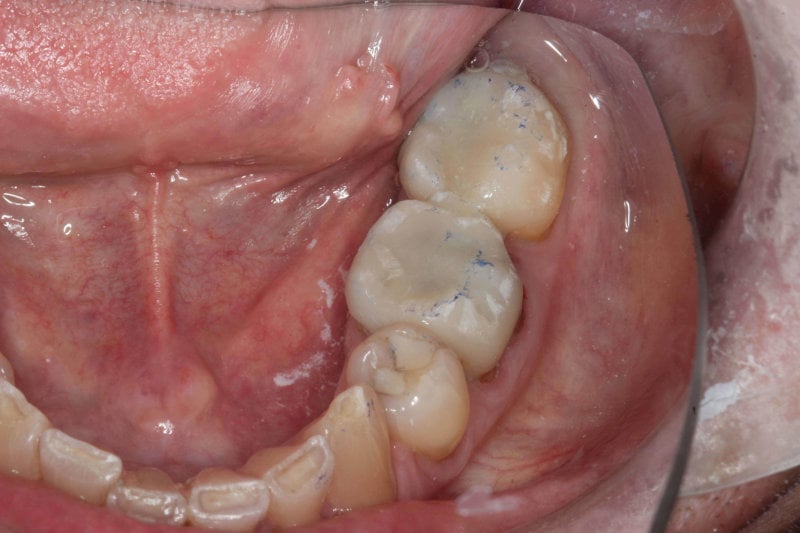
Why we ask & what it means, Do you clench or grind your teeth?
When I ask this question, I am first and foremost trying to gauge the patient’s awareness of their condition. You will have some time since you give them their complete exam, so I already have a pretty good idea if it is something like parafunction or occlusal disharmony.
Use this conversation to find out the patient’s awareness of their problems, as well as how receptive they are to treating it.

Usually after a complete exam, I have a pretty good idea if parafunction or occlusal instability is the likely cause of their wear but regardless of my suspicions I always want to hear the patient’s response. We will still ask “Do you clench or grind your teeth, or even been told you do? I use that response to determine their awareness of their problems as well as how receptive they are to the conversation.
There are a lot of patients who start to close off and you can tell that they really don’t want any part of this conversation. At times you may hear a response such as, “My previous dentist was always trying to get me into a nightguard but I don’t think I need one.” You then know that you may have an uphill battle when educating this patient or you know that you need to approach the subject in a different manner than the previous dentist. So regardless of the answer they give, I am trying to read how the patient feels about the topic. Obviously, we want the correct information but I also use this question to read the patient’s receptiveness to talking about occlusal issues.
Sometimes these questions can identify problems we were not seeing.

We are not only trying to find out if they clench or grind during the day, we are trying to find out if anybody has ever told them if they grind at night. Oftentimes, I will get the response, “No, my wife doesn’t say that I grind my teeth, she just complains about how loud I snore!” Then that leads us into the conversation about sleep apnea or sleep disordered breathing. I feel that this question is useful for obtaining additional information besides the direct question I am actually asking.
You can also find out what habits are making their problem worse.
The patient may not have any nocturnal parafunction but the question may lead you to other habits that could be contributing to the wear that we are observing. Maybe they are biting their finger nails or chewing on pen caps. People who sew will put the sewing needles in between their front teeth, or construction workers will hold the next nail they’re getting ready to hammer in between their teeth. We need to keep in mind that not all wear is due to parafunction and if the patient is adamant that they do not clench or grind their teeth then we need to be asking follow-up questions to identify what may be causing the wear.
Wear can be the result of a patient’s habits, but often times it is caused by occlusal disharmony.

There are some wear patterns that can appear to be from parafunction but in reality can be the result of occlusal disharmony. A complete exam, full diagnostic records and occlusal analysis help us to make that determination. We need to determine if the patient fulfills our 5 requirements of occlusal stability.
- Stable contacts on all teeth of equal intensity in centric relation
- Anterior guidance in harmony with the envelope of function
- All posterior teeth disclude during mandibular protrusive movement
- All posterior teeth disclude on the non-working side during mandibular lateral movement
- All posterior teeth disclude on the working side during mandibular lateral movement
Finally, once you have obtained a full patient history, completed a thorough intraoral exam and have all of your diagnostic models, you have to make sure everything makes sense. Does the patient’s reported history match up with what you are observing intraorally as well as on your models? If it doesn’t, then you either need to go back to the patient or back to your models to find out what information is missing.










Leave a Reply
Want to join the discussion?Feel free to contribute!